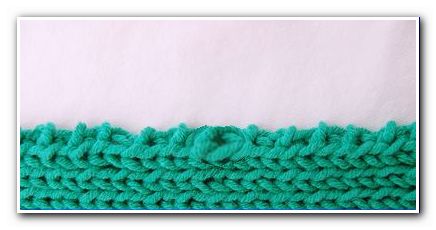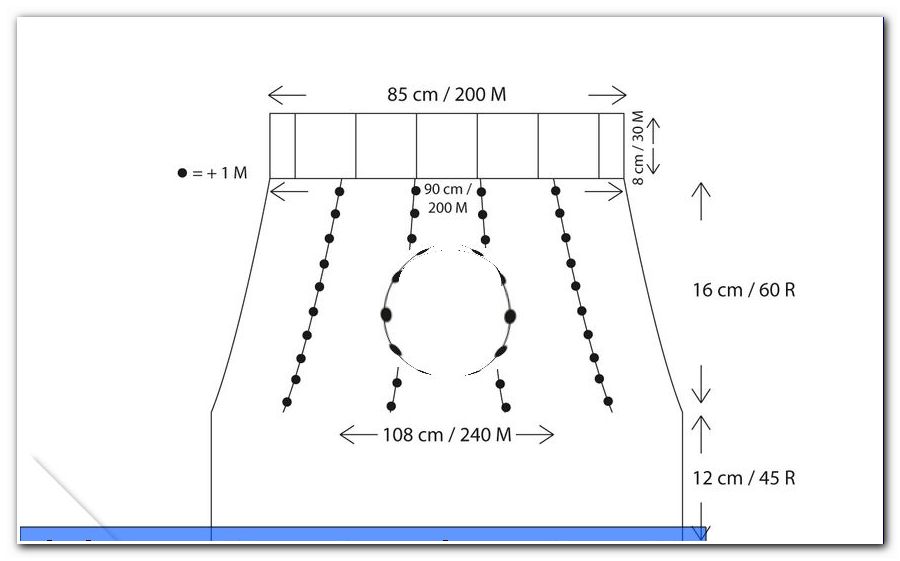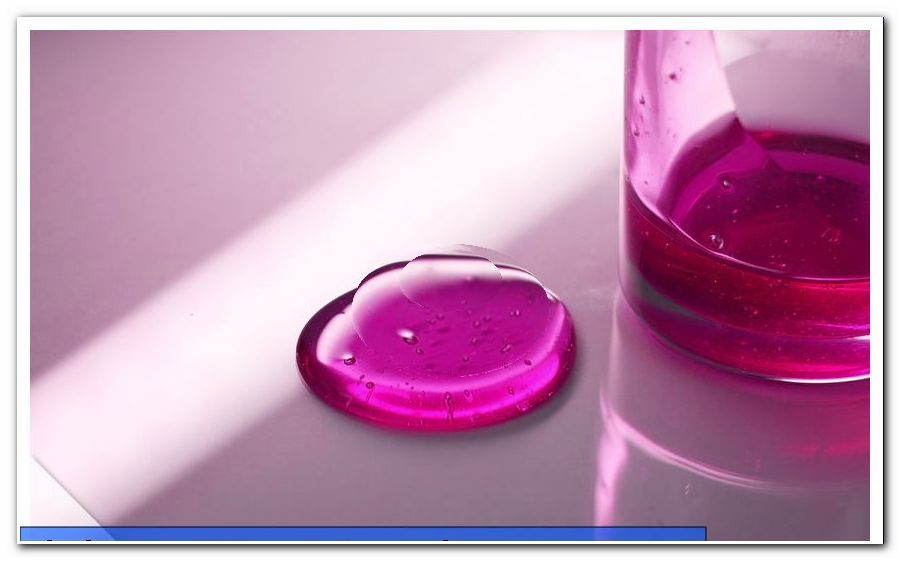Birkenfeige - all about the care of Ficus Benjamini

- Types and varieties
- The right location
- The care
- The cut and special culture aspects
- The secret allergy trigger
The birch fig is seemingly very familiar to us, but in fact, many of their owners do not even know their real name. Most gardeners consider birch figs sensitive, few know their origins, some itch in their presence - get to know an unknown plant closer.
The Ficus Benjamini is not called Benjamini, is not sensitive and has surprising talents - after reading the article you will cultivate a whole new plant (with success).
Once and for all: benjamini or benjamina, mimosa or roughneck ">
It does not get any better, but the birch fig does not mind to be devotedly cared for by you as "benjamini".
Speaking of "devotional care", perhaps this should be tidied up with another property that is probably wrongly attributed to the Ficus benjamina:
The ficus benjamina is soooo sensitive ...
Is he really that? A plant from the tropics that has for decades bravely populated myriads of German living-rooms in a brave and unpretentious and rather green manner, even though it is as similar to them as if a native plant were to grow in the coal cellar? The fig has always been considered as a sign of fertility and wealth.

The alleged sensitivity should at least make you question mentally when buying, so you do not block yourself in the care of oh so difficult plant itself.
You can also "read around" a bit. There are always authors who think that the occasional loss of leaves in a tropical plant, which is used to a climate without seasons and very different light intensities, is completely normal. The bad image of the Ficus benjamina is based only on the fact that a large part of its owners considers the Asian Oceanic woodland a native plant.
Types and varieties
There are about 1, 000 species of ficus, and one of them is the ficus benjamina. There are quite a few varieties: The most well-informed in this regard "Royal Horticultural Society" UK currently counts (as of 02.2016) 74 cultivars, of which license-bound, eight with colored variegated leaves.
The varieties differ rather in terms of profit for the breeder than for any characteristics important to you; but if you are looking for a ficus with the name of a friend, you have 'Alexis', 'Anastasia', 'Danielle', 'Exotic Monique', 'Flandriana', 'Gabrielle', 'Naomi Beauty', 'Nicoline',, Rianne ', ' Vivian 'and, Wendy' quite good cards.
For fans of leaf colors here the Ficus benjamina with variegated leaves: 
- Ficus benjamina 'Golden Monique'
- Ficus benjamina 'Golden Princess'
- Ficus benjamina 'Green Kinky'
- Ficus benjamina, Mini Gold '
- Ficus benjamina, Profit '
- Ficus benjamina, Reginald '
- Ficus benjamina, Starlight '
- Ficus benjamina, Variegata '
The only about 2 m high, white colored Starlight and the normal Ficus benjamina with a maximum height of 4 m have won the "Award of Garden Merit" Royal Horticultural Society. Also known is the small-leaved, Nastasja ':
Mostly you do not even get a breeding name, sometimes you have to buy "The Dude", "Werner", "Judy Samantha Davina La Croix" and "Brunhilde"; if botanical names are given, you might be dealing with synonyms that belong to completely different fici. Once there is a certain probability that it is a Ficus benjamina, that does not matter. In terms of care, only varietals with variegated leaves have special features, and these varieties are recognizable even without a botanical name. In terms of "The Dude" and "Brunhilde" would be interesting at most (if "The Dude" names grows accordingly unpowered) where and how these plants were raised and maintained. You can also inquire personally if the offer comes from committed professionals.
It almost does not matter if you've caught "some fig" as long as it's an ornamental plant variety and not a strangler fig that may have weird ideas with your living room furniture:

The right location
Now that you know what "your ficus" means, and maybe even decided on a particular variety, it's all about his location needs. These are the location claims of a tropical plant:
WARM, WARM, WARM

Specifically specified, this means:
- Choose the warmest available location
- Normal room temperatures between 18 and 25 ° C are right
- The 1, 000 species of figs inhabit the whole world, but everywhere the tropical and subtropical regions
- This is almost always associated with a fairly high humidity, especially in the Asian homeland of Ficus benjamina
- Therefore, the benjamina should feel comfortable in a (used) kitchen and in the bathroom
- On the other hand, the ficus needs the high humidity, especially for the abundant formation of aerial roots
- If he "only" has to form leaves, he probably comes with normal humidity
- From nocturnal average temperatures of 15 ° C, the birch fig can reach the balcony
- But please well pampered, the tropical child does not want to freeze and get no heavy rain or storm
- Bright, but not necessarily full sun
- Plump midday sun also tolerates the indoor plant only after a period of habituation
- Which is not a sign of special sensitivity, but completely normal
- For a plant also has a metabolism that it must adjust to new conditions
- Even if the locations seem to resemble each other: Outside, the plant must process more light even when the sky is overcast
The care
The fig is then easily satisfied at the right location: 
- Normal garden soil or Kübelerde, one is not picky
- Water regularly when the soil just dries up
- Also from above, with the spray bottle
- Beware of hard water, which can cause lime stains on the leaves
- Fertilize regularly, in the potting soil there are hardly any microorganisms that produce "nutrients"
- With commercial green plant fertilizer in medium dilution, every one or two weeks
- Now and then turn something so that all leaves get light and develop the full metabolic rate
- This also ensures straight-line growth
- Cultivate normally in the interior in winter with slightly reduced supply
- Standing in the open air in the summer, the birch fig is admitted when the temperatures inside and outside are almost the same
- Repotting is recommended every one to two years, with new earth
- For the section see "special cultural aspects"
What does not like!
Sensitive or not, there are conditions that no plant and certainly no tropical plant can do:
- Full shade, plants feed on photosynthesis and they need light
- Full sun, through the water on the leaves it burns, surprisingly it creates the plant metabolism and sunburn
- Stagnant heat = used air, also air is needed for photosynthesis
- Strong temperature fluctuations increase plant, which (like tropical plants) are not used to distinctly different seasons
- Tropical plants can even get too cold in German dwellings when an overzealous air conditioning system / sparingly used heating produces average temperatures below 18 ° C
- Here: you can get a small impression of the complexity of a plant metabolism in conjunction with stress
- Against this background, it is already understandable that a living organism that is actually located gets stressed when it has to walk
- The fact that relocation is generally not tolerated, is in thousands of benjamina, which are rented in Germany for trade fairs and indoor greening, but maybe just a fairy tale
- Panaschierte leaves have reduced chlorophyll surfaces, so Fici must be slightly lighter so that the photosynthesis "works"
- Heller does not necessarily mean sunnier, it depends on the length of the daily incidence of light
- And the variegated leaves often lose some resistance during breeding, and care for them all together
- On normal leaf fall has already been discussed above, even the leaves of an evergreen plant do not live forever
- Abnormal leaf fall can be caused by too little / too much light, water, heat, nutrients
- Or by pests / diseases against which the Ficus benjamini is prone to like any plant in a deficiency situation (a tropical plant is always in the German living room)
The cut and special culture aspects
Birch figs have several peculiarities that you should know as a keeper of a ficus benjamina and that can even be used for special cultural forms. First, figs are very cut friendly and also drive out of the old wood, which means for you as a carpenter:
- Limiting cut
If your Ficus gets too big, you can brake it uncritically:
- You can cut your Ficus benjamina whenever you want
- Best time in spring, then comes from the pruning equal to new shoot
- You can simply cut the ficus evenly all around or cut off only at the top
- You can also shape it the same way if it has grown one-sided
Dry and wilted, sick, discolored, crooked shoots are always cut away
- Cut to the shaping
Unless the shoots are crooked because you wanted it that way: 
- You can also try one or the other form cutting with a Ficus benjamina
- Or create a ficus forest
- As the shoots of Ficus benjamina grow together when they meet, you can "do" much more:
- You can also pull it as bonsai
- Gladly in somewhat untypical forms
For a bonsai, you need one of the small-leaved varieties, or you pull out of a headstock source material that you can influence from the beginning.
- Cut to multiplication
With each trimming, you will win a lot of head cuttings (shoot tips), which you can cut according to instructions in a certain length, rooted in cultivation pots and Pikiererde and covered with foil for higher humidity.
But as I said, figs have always stood for fertility and wealth, they like to drift and abundantly, from seeds and cuttings. You can also do the trimming in a cup with some water and forget about it until your cuttings make roots.
- The healing Ficus Benjamina
The trimming of the Ficus Benjamina could even be used for healing. The white milky juice contains flavonoids, furocoumarins and rubber. With antibacterial action, and the extract of the leaves to help with rheumatic joint pain and swelling, in Asia Ficus Benjamina is used as a medicinal plant.
The leaves also do us good on the plant: The birch fig is among the plants that were studied by NASA in the "NASA Clean Air Study" in 1989, whether they can purify the air in space stations. Ficus Benjamina can, he filters formaldehyde (often exudes from the device), xylene and toluene (road traffic emissions) from the air (the rubber tree Ficus elastica creates only formaldehyde).
However, before you clap Ficus Benjamina leaves on the rheumatic shoulder, you should definitely talk to a doctor; and the room air with the birch fig might also cause trouble, the Ficus Benjamina has another side:
The secret allergy trigger
Finally, a few words about the "care of the people" who live together with a Ficus Benjamini:
All fig plants have considerable allergic potential, in a Ficus carica (real fig) around 30 potentially allergenic substances. Our houseplants can keep up, Rubber tree Ficus elastica, Violin fig Ficus lyrata; and the birch fig Ficus benjamina, according to the atopic dermatitis portal jucknix.de, are now among the most important causes of allergic reactions.
30 potentially allergenic substances sounds worse than it is - with a single fragrance plug you bring a similar collection of allergen substances into the house, but industrially manufactured and therefore probably even more incalculable.
But if you are prone to allergic reactions anyway, you need to be careful and thoroughly examine the reactions. No matter if your immune deficiency comes through excessive pollution or from hygienic life, in the long run after an immunotherapy more plants will move into your apartment.
Caution is also required in pets, neither dogs, cats or small animals or birds should be able to nibble on the leaves; and not only latex allergy sufferers, but also carpet and clothing should not get anything from the white milk juice (when cutting: may dribble a few days).




